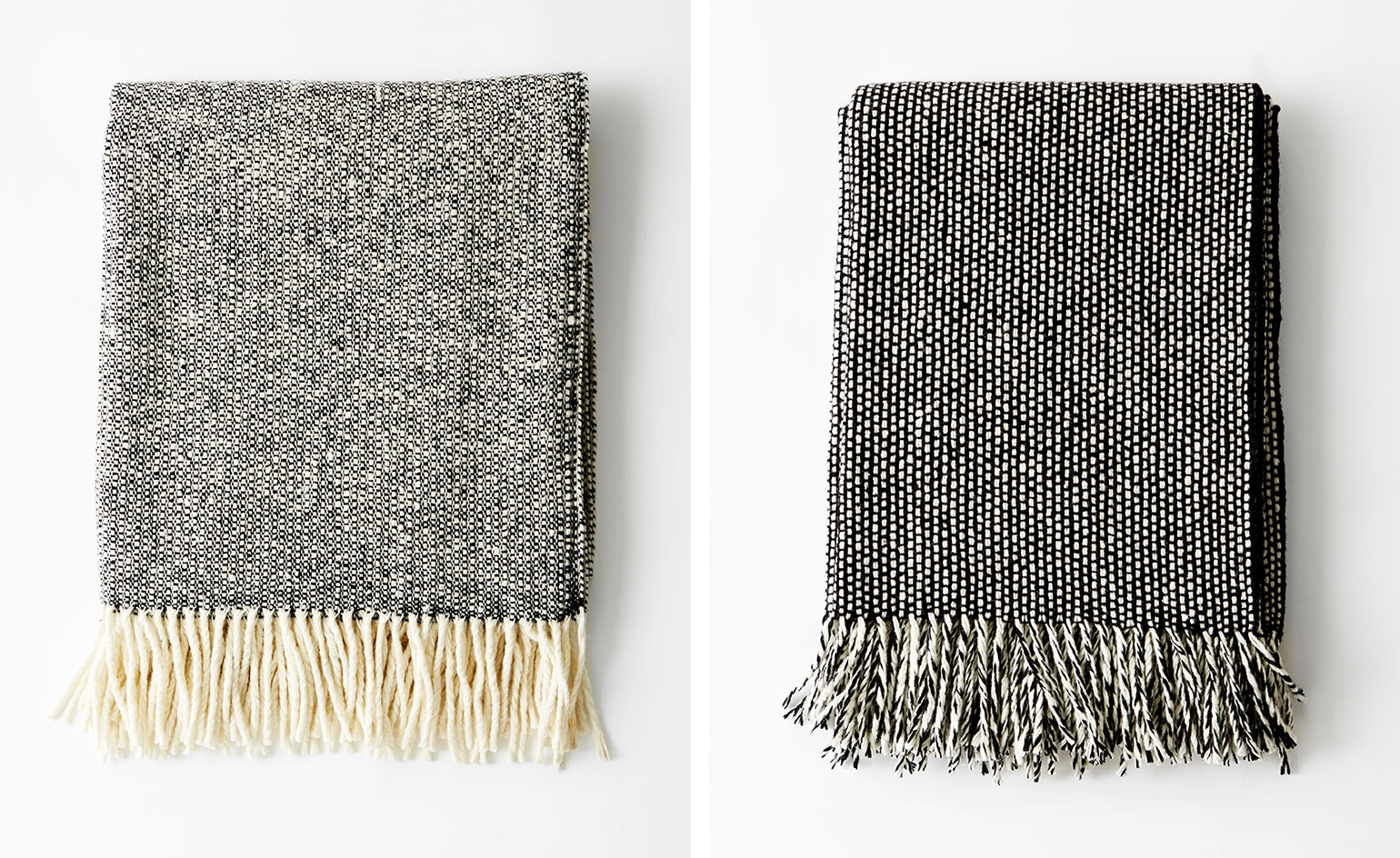A postcard from Irish Design Week 2025
How Ireland's collaborative design culture, from Kilkenny's 60-year legacy to island circularity offers an expansive model for the future

As it welcomed designers from around the world, Irish Design Week 2025 offered a distinctly homegrown approach. Now in its fourth year, the festival comprised over 65 events across multiple counties, from medtech innovation in Galway to experimental sound workshops in Limerick, fashion collaborations in Kerry to waste-plastic textile experiments in Cork.

The Ties that Tie and the Links that Link, celebrating 60 years of the Kilkenny Design Workshops at the National Design & Craft Gallery, Kilkenny, Ireland. Featuring items from the Kilkenny Design Workshops history
The theme, The Ties that Tie and the Links that Link, is inspired by Kilkenny Design Workshops, which opened officially 60 years ago. Established as Ireland's first state design service and deliberately located outside Dublin to foster an independent community of designers and craftspeople, KDW modernised Irish craft while embedding a collaborative ethos that continues to shape the country's design culture: connective, anti-hierarchical, and deliberately broad in scope.

Foreground: Oisin Kelly candle holder cast (left), cast-iron candles from cast (right); Background: Tapestry, designer unknown. On display at The Ties that Tie and the Links that Link, celebrating 60 years of the Kilkenny Design Workshops at the National Design & Craft Gallery, Kilkenny, Ireland. Featuring items from the Kilkenny Design Workshops history.
That breadth is visible not just in the range of events, but in the festival's foundational structure. Unlike the UK, where design and craft councils operate separately, Ireland's unified Design & Crafts Council oversees both. As Tom Watts, head of design for Irish Design Week, puts it: 'We have a very Irish take on design: a storytelling based model where it's particularly open and a very wide-lens view of what design is and can be.'
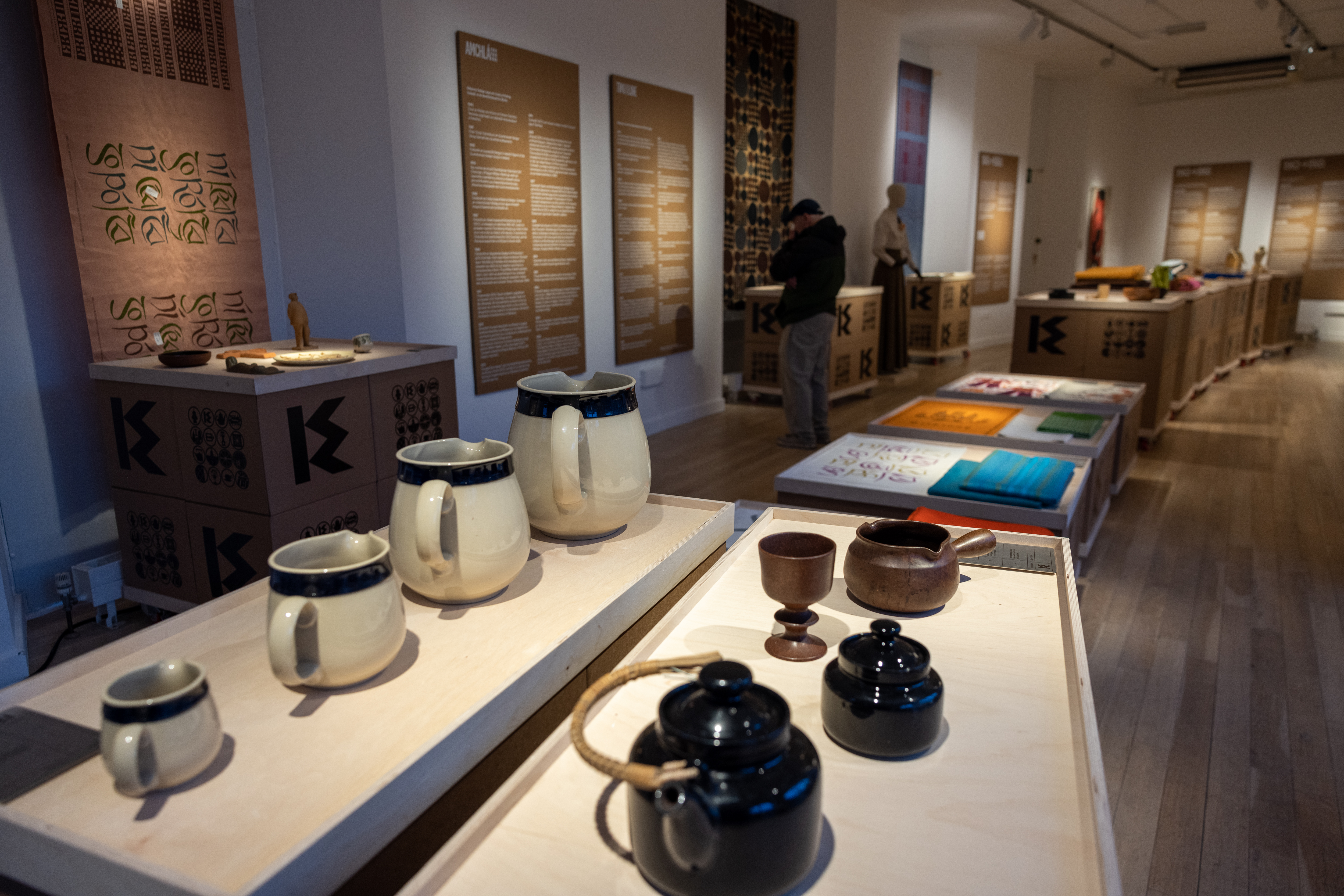
Family of four jugs with a blue band and beige glaze designed by Jim Kirkwood (left); unlabelled Casserole dish with brown glaze and two lip pourers; goblet with brown glaze prototype; and part set of black glazed teapot with cane handle and sugar bowl. On display at The Ties that Tie and the Links that Link, celebrating 60 years of the Kilkenny Design Workshops at the National Design & Craft Gallery, Kilkenny, Ireland. Featuring items from the Kilkenny Design Workshops history
We have a very Irish take on design: a storytelling based model where it's particularly open and a very wide-lens view of what design is and can be
Tom Watts
A model for creative collaboration
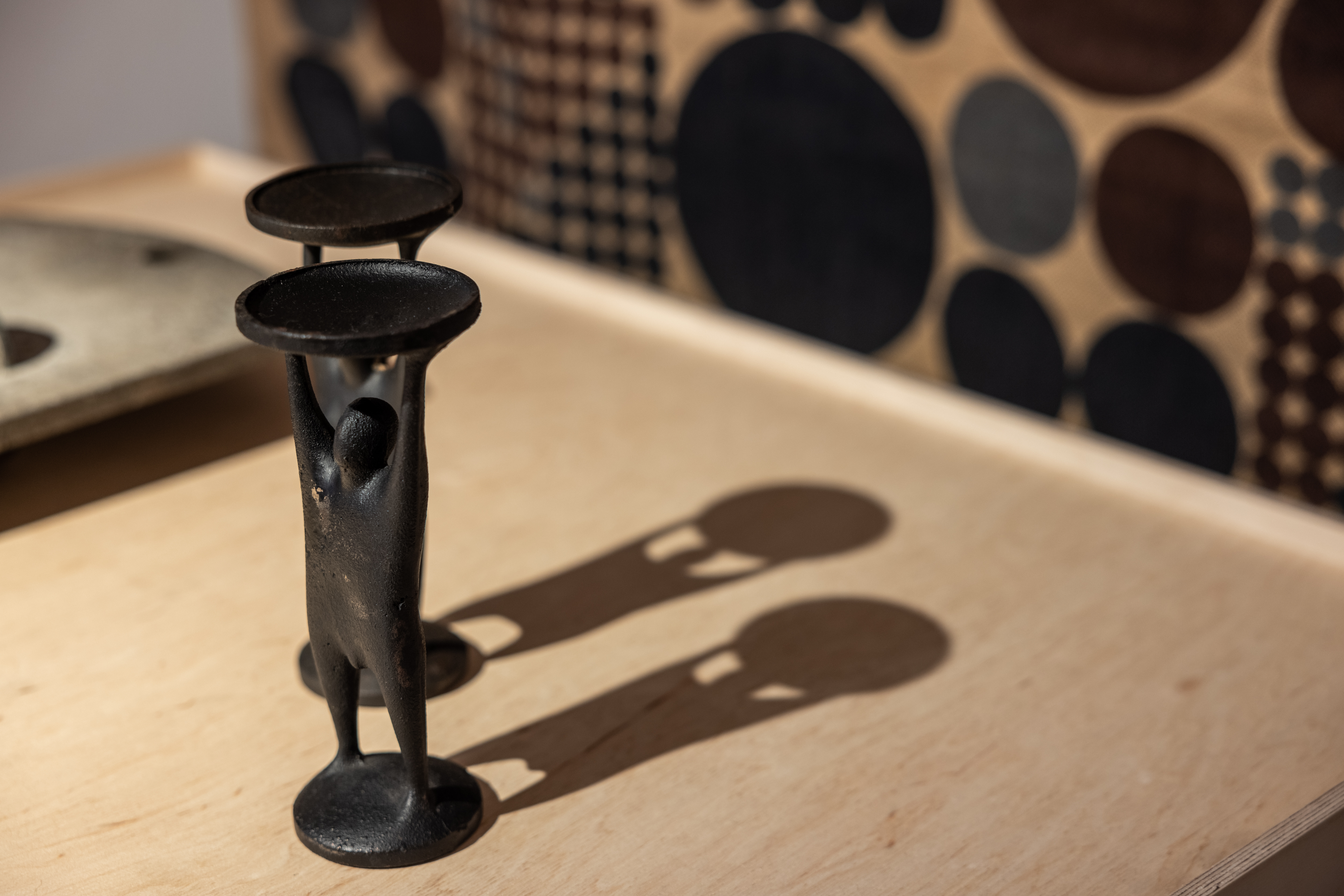
Male and female cast-iron candle holders designed by Oisin Kelly. On display at The Ties that Tie and the Links that Link, celebrating 60 years of the Kilkenny Design Workshops at the National Design & Craft Gallery, Kilkenny, Ireland. Featuring items from the Kilkenny Design Workshops history
That openness extends to international collaboration. Irish Design Week has adopted the Design Diplomacy model from Helsinki Design Week, pairing Irish designers with international counterparts for intimate, curated conversations—which Watts describes as bringing 'curveballs' by asking embassies to select designers from their national communities.
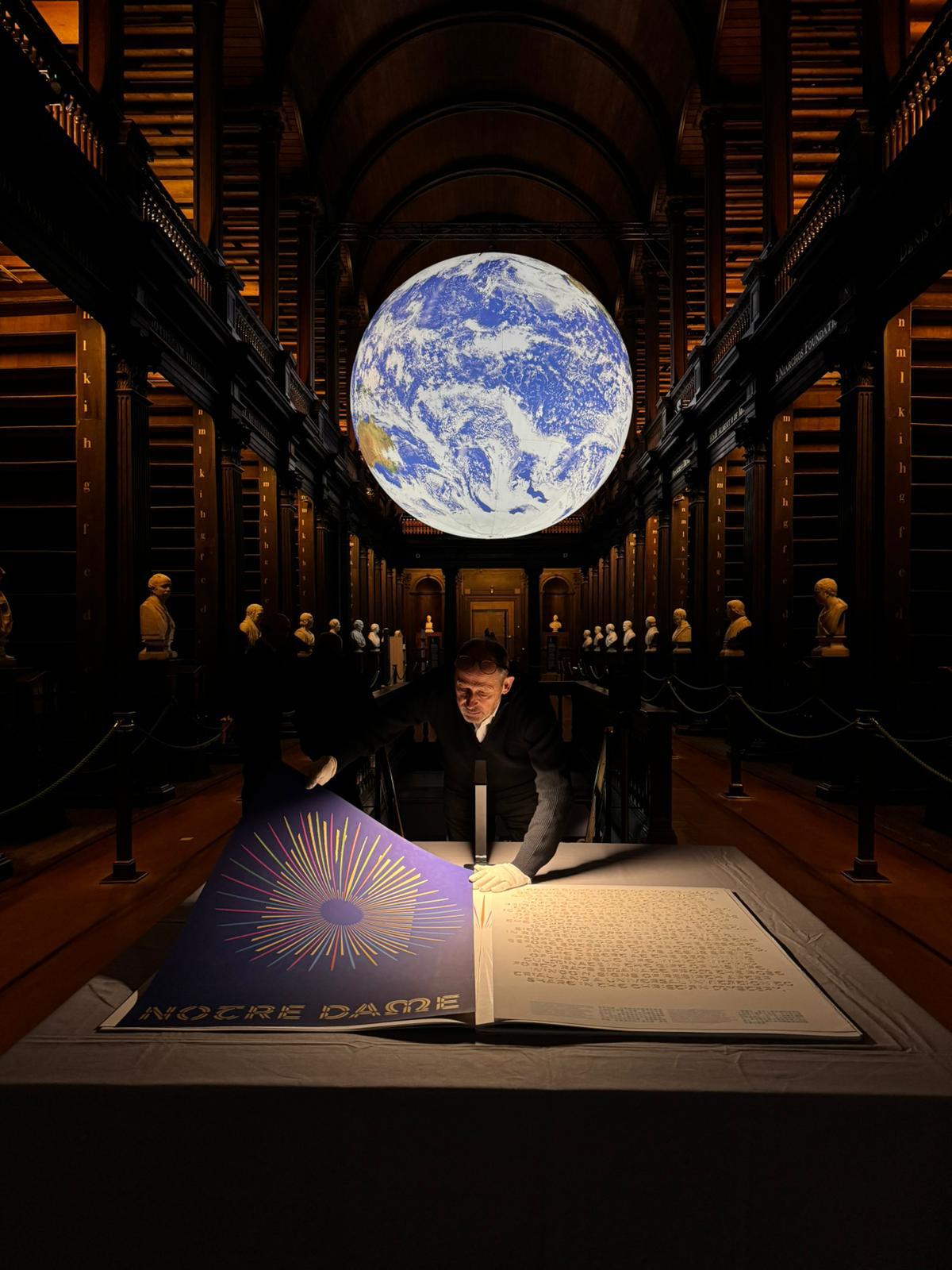
Tabula, by Laurent Ungerer and Raphael John is a walk-talk exploring the creative process behind the new visual identity of Notre-Dame de Paris. Image from The Long Room, the Old Library, Trinity College Dublin
The pairings span disciplines and continents: Irish designers meet peers from France, USA, Japan, Australia and Sweden working in fields from interior design to sound. A highlight is Laurent Ungerer, who recently designed the new visual identity for Notre Dame, leading Tabula, a walk-and-talk workshop exploring design in dialogue with heritage architecture across Trinity College Dublin, St. Mary's Cathedral in Limerick, and UCC in Cork.
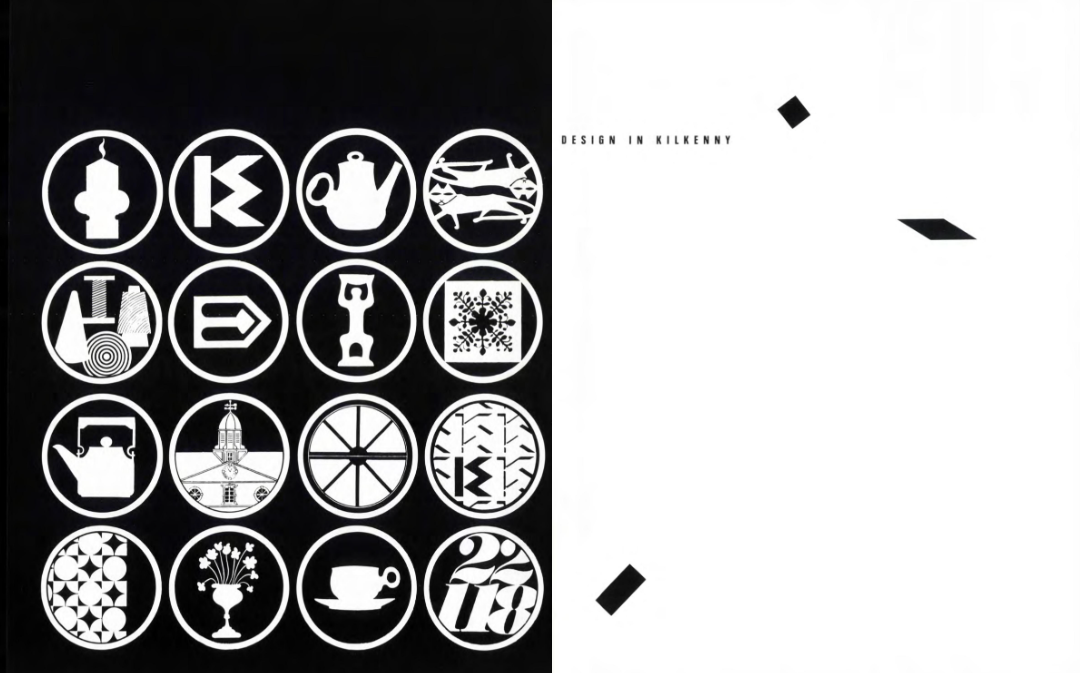
This iconic book, by Nick Marchant and Jeremy Addis was originally published in 1984, alongside an exhibition celebrating 21 years since the announcement by the Irish government of the plans for Kilkenny Design Workshops (KDW), which officially opened 2 years later in 1965. It is currently out of print and highly sought after, being the only book that was published whilst KDW was still in existence. It offers a fascinating glimpse of life in the workshops in 1984, which could be said to be its golden era
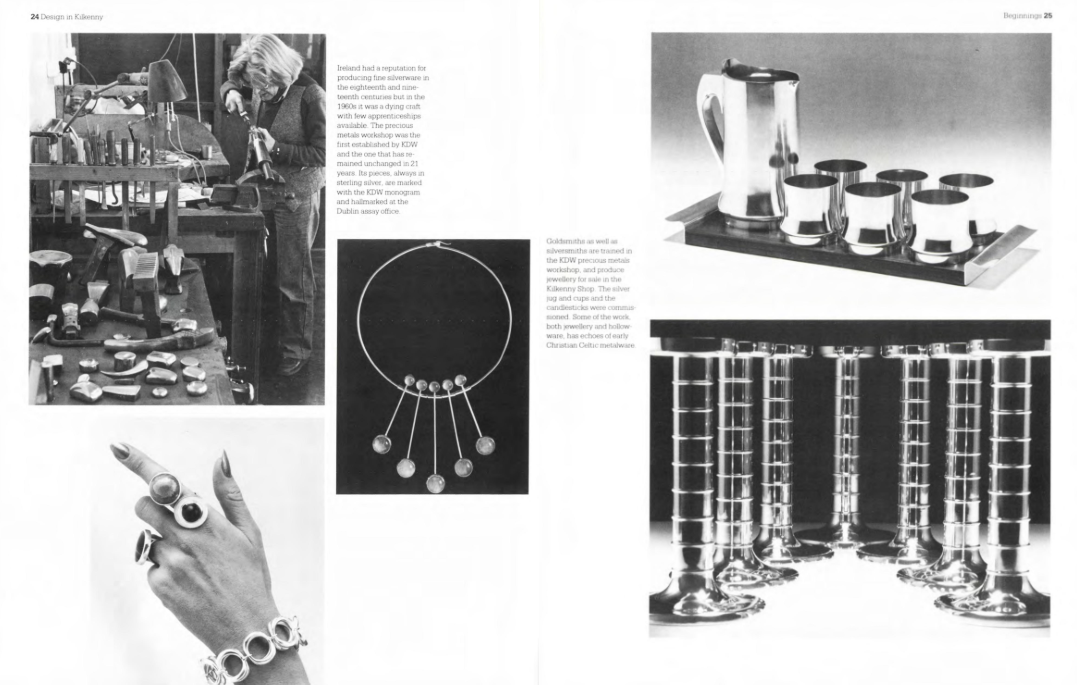
Now digitally reproduced to complement the strand of events in Irish Design Week that mark 60 years since the opening of KDW, it also includes a chapter that was omitted in 1984 – entitled “The Future” – an effective time capsule of the authors’ thoughts about what lay ahead for design in Ireland, and how KDW could play a significant part in that evolution
Those ties reach back through time as well. To mark its anniversary, Irish Design Week is digitally republishing Nick Marchant and Jeremy Addis’s 1985 book on Kilkenny Design Workshops, the only account published while the workshops were in operation. Alongside the original account of the historical context that gave rise to them, the new edition includes a previously unpublished chapter called 'The Future', ironically missing from the 1985 release due to deadline pressures. A conference forming part of the programme provides a forum to discuss the ideas of that chapter, and predictions of what the next 20 years might look like.
Design and craft

Oisín Kelly, ‘Girl With Ponytail’ circa 1960
Also returning to Kilkenny is Mary V Mullin, a founding member of what became the Design & Crafts Council Ireland, who went on to establish the Boilerhouse at the V&A with Terence Conran and Stephen Bayley (the precursor to London's Design Museum). She brings a collection of 130 artifacts, every one made in Kilkenny's castle yard, completing a geographic and temporal loop that embodies the festival's theme.
Receive our daily digest of inspiration, escapism and design stories from around the world direct to your inbox.
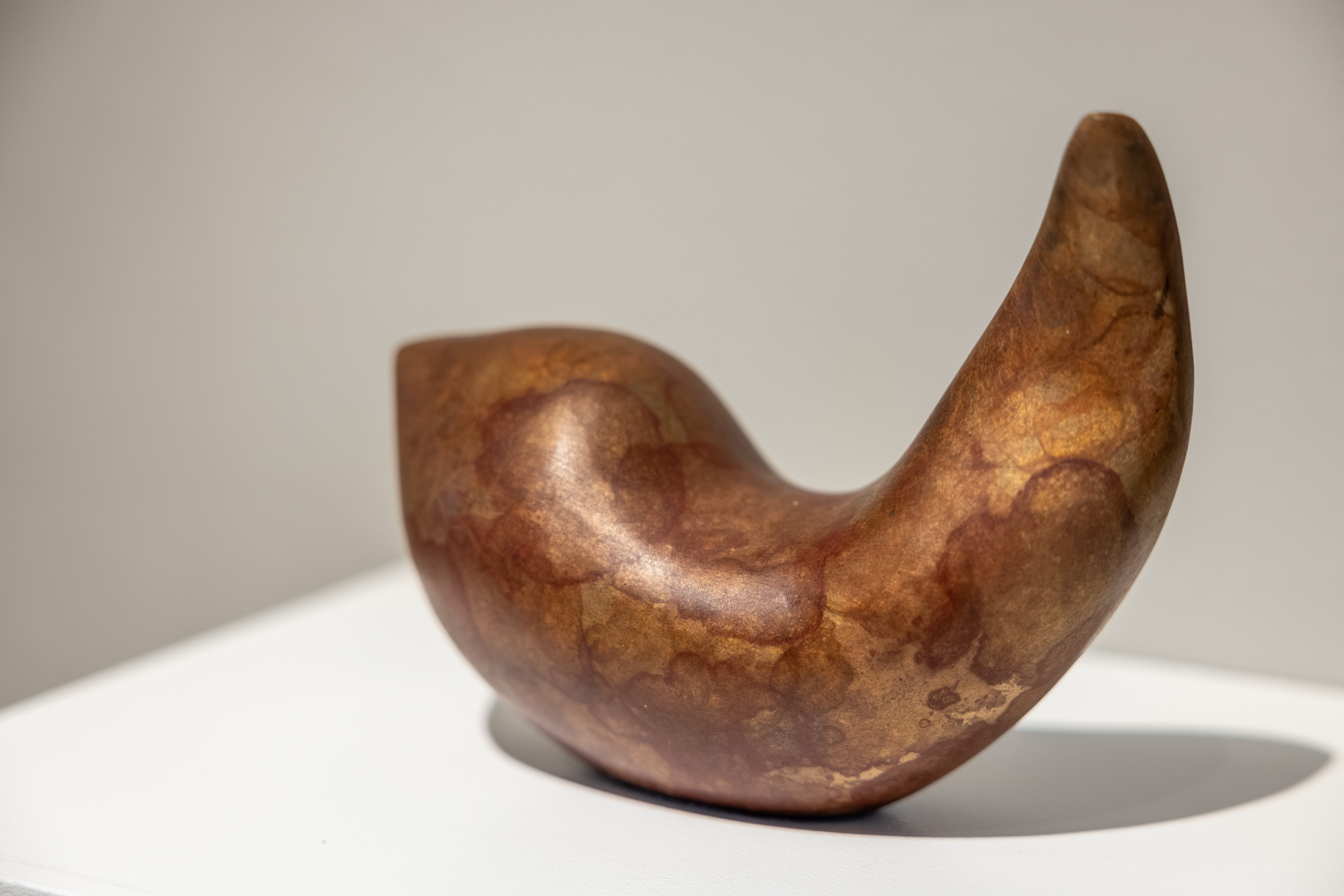
Sonja Landweer, Horned Vessel, 2001
This commitment to preserving heritage craft extends to contemporary policy work. The Design & Crafts Council is collaborating with the European Commission on Geographical Indication (GI) protection for Irish craft—a designation that safeguards place-specific techniques and materials from global imitation.
'They see the value in having a GI and that their products are branded with a GI,' says Mary Blanchfield, CEO of the Design & Crafts Council Ireland. Connemara marble, Donegal tweed, and Carrickmacross lace are among the crafts being considered—each tied to specific regions and vulnerable to manufacturers elsewhere claiming their provenance. The work speaks to a broader Irish understanding: that craft authenticity isn't just about technique, but about the deep relationship between making and place.
Islands as models of circularity
Ireland's influence extends well beyond the island of Ireland. Concurrent to the festival week, the European Parliament is hosting a design policy conference in its new Dublin flagship building, signalling Ireland's role not just as a participant in European design discourse, but as a contributor shaping it.
Beyond native craftsmanship and raw materials, Ireland's contribution to the wider design world is also philosophical; an outlook honed by its island nature. Australian interior designer Banjo Beale, known for the BBC's Interior Design Masters and Designing the Hebrides brings discussion about islands as models of circularity to the festival.
'On an island, you don't have the option to throw things away,' Watts explains. 'There is this kind of mentality on islands about reusing and repairing and mending because you can't go to B&Q. You have to be resourceful.' Blanchfield adds: 'we have a saying: keep something for seven years and it'll find a use for it.'
Satellite events: Form & Fable
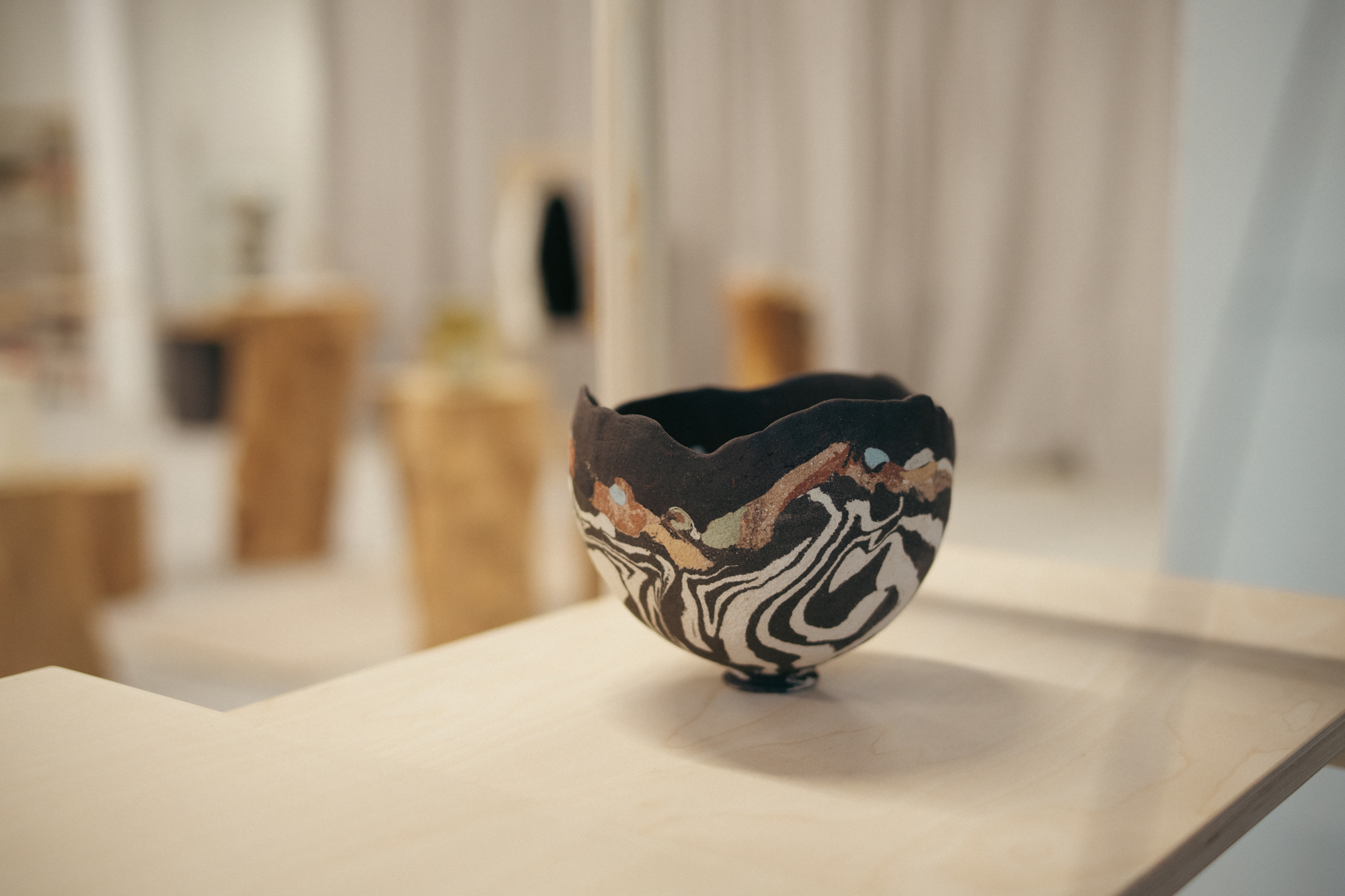
Form & Fable at Wilton Park: Mizen Head by Bernadette Tuite
The festival's energy extends beyond the official program, with satellite events popping up, building on the momentum around Irish design. Form & Fable, a six-week pop-up curated by J Hill's Standard at Wilton Park in Dublin, brings together work from Irish makers across disciplines, from Mourne Textiles' handwoven pieces to Fermoyle Pottery ceramics and Sam Gleeson knives.
Ava Kelly, director of J Hill's Standard, notes the challenge many makers face: 'Many work from isolation in various beautiful parts of the island and it is always a big challenge to get the work before the public.'
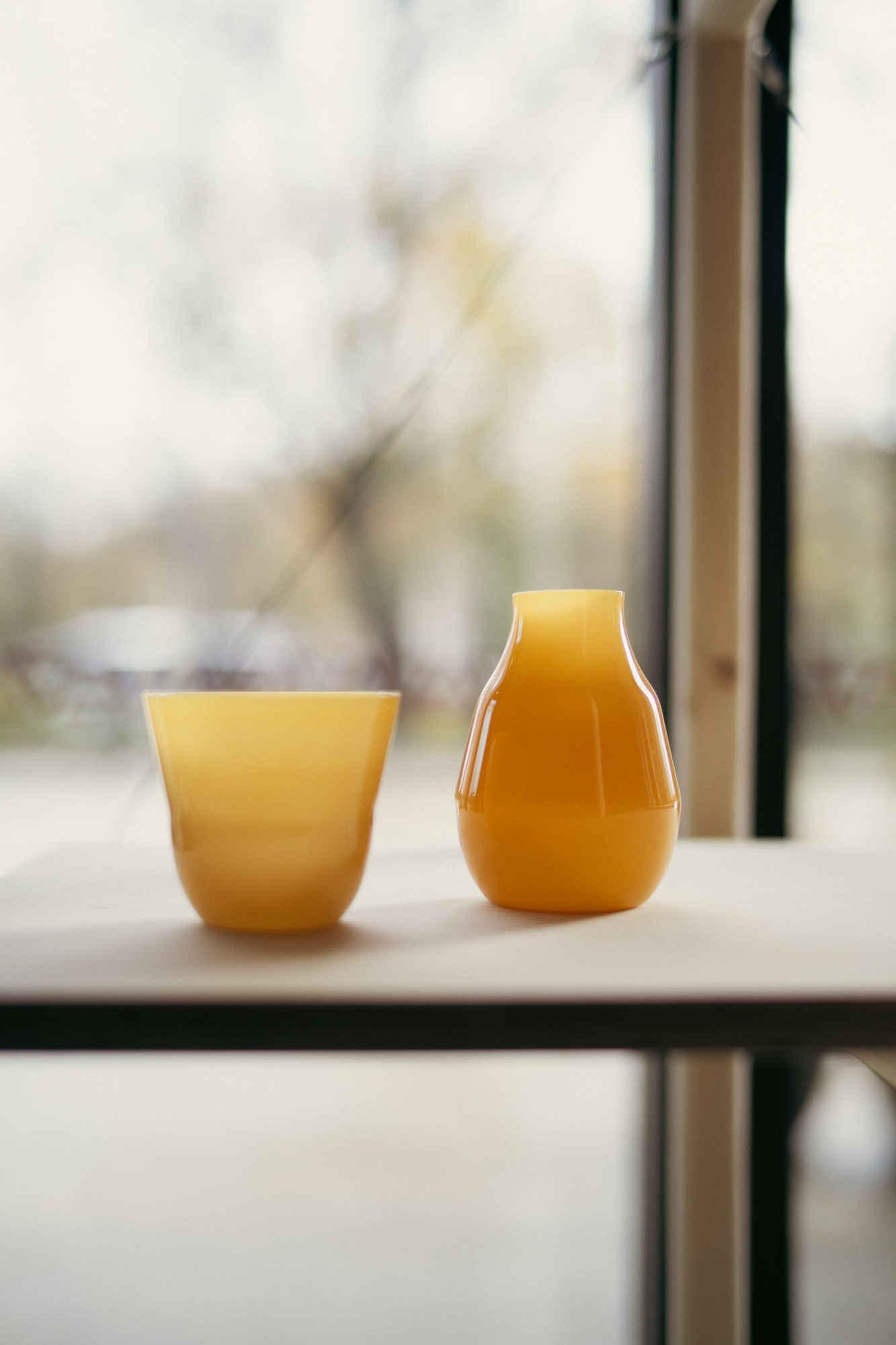
Fit x Aldo Bakker and J Hill's Standard

Wood Turned Vessels by Jack Smith
Sixty years after Kilkenny Design Workshops embedded collaboration at the heart of Irish design, that ethos remains visible everywhere—from the unified council overseeing craft and design, to events activating across counties rather than concentrating in the capital, to international designers paired in intimate conversation. The ties that tie aren't just a theme; they're the method itself. Ireland's contribution to design isn't only in what it makes, but in how it thinks: connective and expansive in its definition of what design can be.
Laura Havlin is an editor, writer and strategist specialising in visual culture. Previously Head of Content at D&AD, and Senior Editor at Magnum Photos, she is now working independently on creative projects in culture and photography.
-
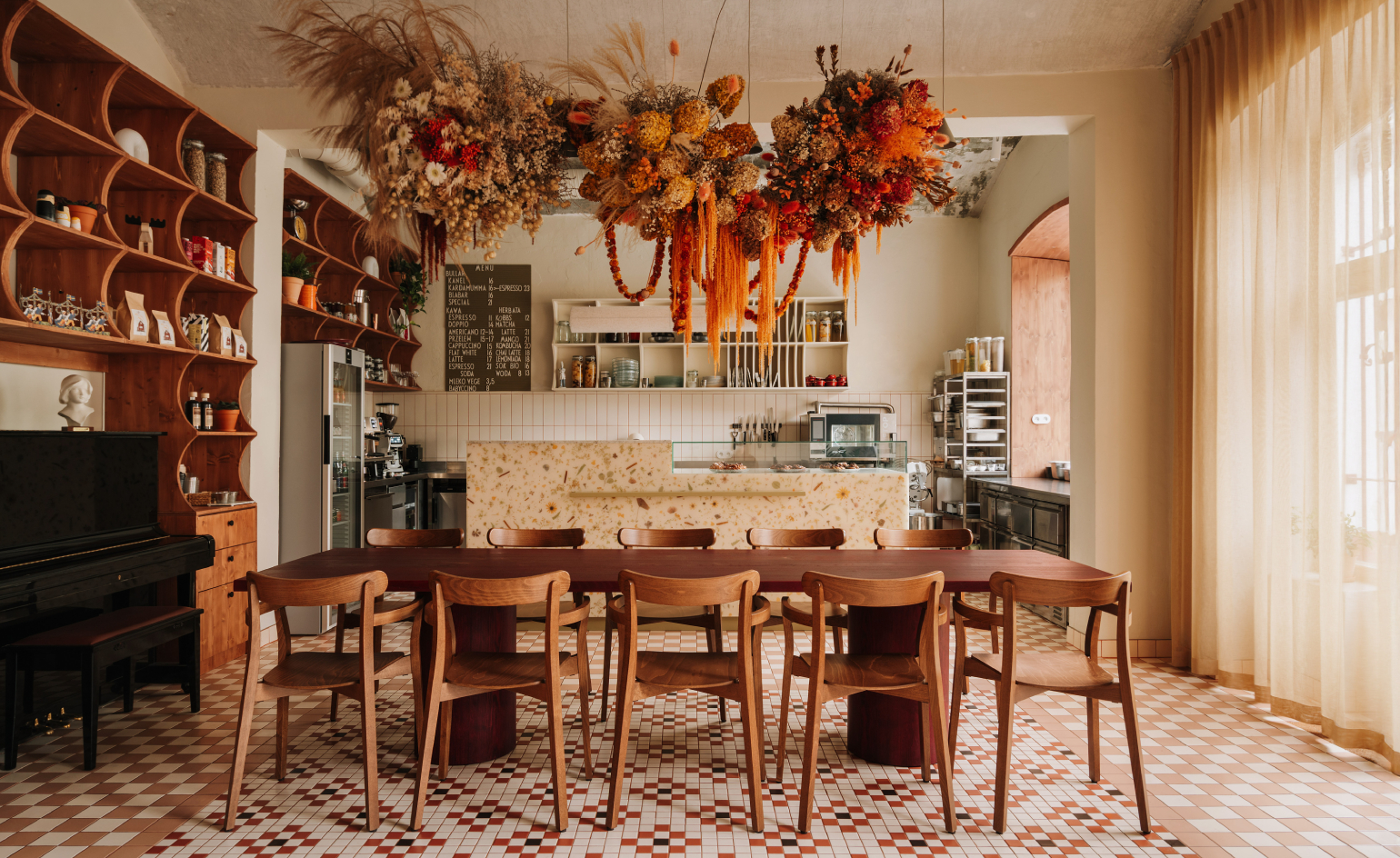 Homespun pleasures are the order of the day at this warm Kraków restaurant
Homespun pleasures are the order of the day at this warm Kraków restaurantLocated in the Kazimierz district, Dala Restaurang emerges as a space where homely character meets a love for nature and the simplicity of life
-
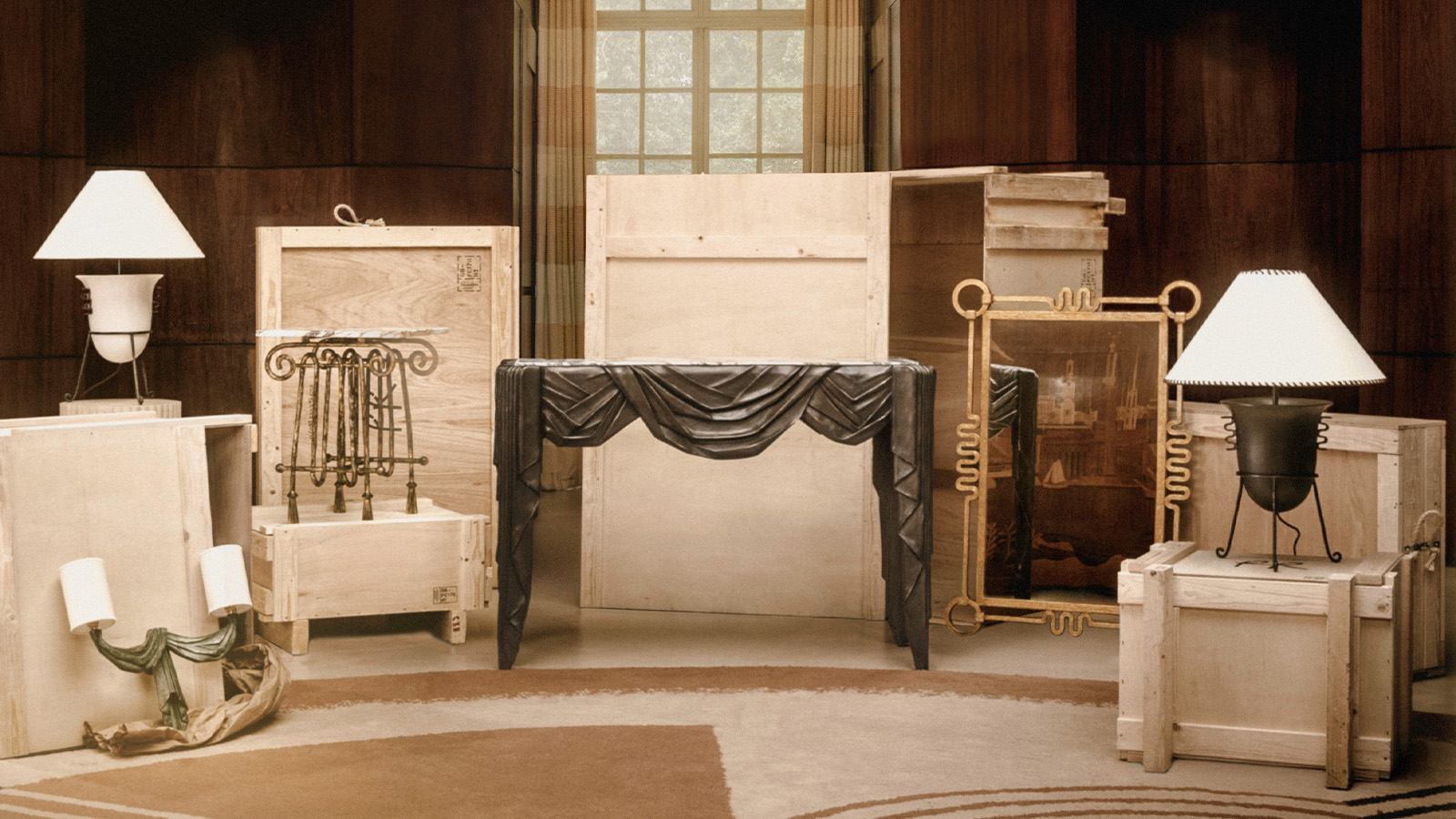 Gergei Erdei’s furniture collection with Porta Romana is inspired by treasured family heirlooms
Gergei Erdei’s furniture collection with Porta Romana is inspired by treasured family heirloomsWorking closely with the British furniture and lighting company, artist and designer Gergei Erdei drew inspiration from his grandmother’s jewellery box to create a furniture collection which has an air of antiqueness
-
 Frank Lloyd Wright’s Fountainhead will be opened to the public for the first time
Frank Lloyd Wright’s Fountainhead will be opened to the public for the first timeThe home, a defining example of the architect’s vision for American design, has been acquired by the Mississippi Museum of Art, which will open it to the public, giving visitors the chance to experience Frank Lloyd Wright’s genius firsthand
